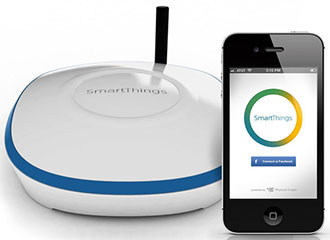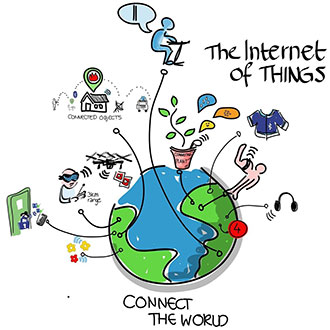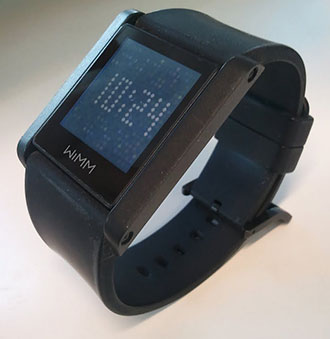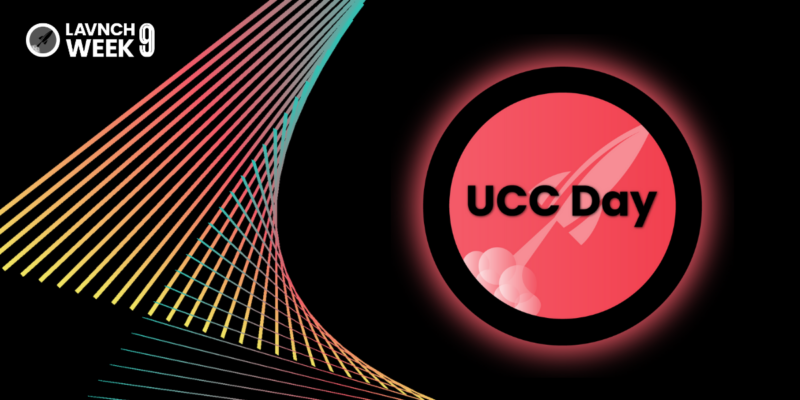All the Right Moves? A Perspective on Innovation vs. Acquisition
Last week I published a blog on the Internet of Things and convergence, basically highlighting two companies — Cisco and Google as those leading the way in IoT and IT. However I felt the need to clarify that while I mentioned the cloud collaboration environment that Cisco has built through acquisitions as strategic to an overall IoT/IT/UCC focus, I didn’t mean to infer that this strategy placed them on par or above any of the companies that exist in today’s heralded disruptive UCC space. In fact, while we look at acquisition models of all kinds in the realm of technology, the question arises whether this strategy plays out favorably in that technology company’s particular industry or industries. The question arises as to the comparative nature of innovation vs. acquisition in a given technology space and where it works as well as where it may be perceived as a shortcut to being an actual “player” in the field vs. those that continue to build from the ground up. I have focused here on the two companies mentioned in my IoT blog: Google and Cisco, however I have expanded on this to include those competitive players that they stand up against.
Google, the empire of today (and tomorrow)?
Let’s first take Google for example and how they have built their Internet of Things and IT environment, as well as fitting in UCC strategy. Months back, Google purchased Nest in a move that made people take notice but wonder just what Google was doing exactly. Some speculated that it could be a purchase and put it on the shelf, others saw Google outside-the-box thinking methodology in bringing Nest to the fold. As a company steeped in innovation, Google is well known for having the #1 search engine in the technology world (the main target for SEO — search engine optimization), the most often used Chrome browser, Android OS — the leading mobile operating system, and the highly popular Chromebook cloud-based laptop (Gartner has predicted that more than 5.2 million will be sold this year). Their acquisition model actually seems to make very good sense. With the purchase of Nest Labs, and the most recent acquisition of Dropcam, a start-up firm with a particular focus on Internet-enabled cameras for $555 million, they continue to build heavily into the home automation market as well as enhance their Internet of Things technology profile.
 One thing to note, after acquiring Nest, Google allowed Nest to operate as its own brand which has allowed the company to grow at a steady pace. Microsoft themselves delved into the home automation market by partnering with Insteon back in May. With this, the new version of Insteon’s app will include complete Live Tile integration capable of offering status updates for multiple devices at once on the start screen of devices running Windows 8.1. However just a few days ago, Samsung announced its acquisition of SmartThings, a fast growing startup, which not only sends them shooting into the home automation space, it will likely dwarf Microsoft’s Insteon partnership and even challenge Google’s strategy. However for now, Google is still whom many consider the one leading the charge. Can Microsoft’s partnership (no, not acquisition) with Insteon compete with Google’s strong home automation acquisition strategy? As far as I’m concerned, hardly. But Samsung…
One thing to note, after acquiring Nest, Google allowed Nest to operate as its own brand which has allowed the company to grow at a steady pace. Microsoft themselves delved into the home automation market by partnering with Insteon back in May. With this, the new version of Insteon’s app will include complete Live Tile integration capable of offering status updates for multiple devices at once on the start screen of devices running Windows 8.1. However just a few days ago, Samsung announced its acquisition of SmartThings, a fast growing startup, which not only sends them shooting into the home automation space, it will likely dwarf Microsoft’s Insteon partnership and even challenge Google’s strategy. However for now, Google is still whom many consider the one leading the charge. Can Microsoft’s partnership (no, not acquisition) with Insteon compete with Google’s strong home automation acquisition strategy? As far as I’m concerned, hardly. But Samsung…
Along with this, Google is also well known as the leader in another technology space — wearables. While others like Apple try to match their stronghold on wearable technology, Google leads by leaps and bounds ahead of the rest of the market, especially with their feature wearable – Glass. Glass Explorers are the progressive users of the revolutionary wearable and Glass Developers are those who design and develop Glassware, apps and services specific to Glass. The developer overview provides further information on the Glass Development Kit, working in the Android environment, The Mirror API and Hybrid Glassware which allows the developer to launch fuller experiences that run on Glass. It’s a massive technology community that Google has built and there is literally no end in sight as they are developing applications for healthcare and education to start, however application in the enterprise is already being discussed. Glass in AV? That’s a discussion for an Explorer interview.
With the innovation of today to go along with highly strategic acquisitions to build a growing profile in the IT, mobility, home automation and Internet of Things technology space, Google hits nothing but home runs. However on the UCC side they’re nothing to sneeze at either. Months back Google announced the launch of the Chromebox for Meetings, a grand foray into the enterprise video conferencing market with an all-in-one solution out of the box (Chromebox unit, HD camera, microphone/speaker and remote control) positioned as an easy to manage, under $1,000, everything you need device for video meetings. Now while I believe the jury is still out on the Chromebox for enterprise usage (I see it as more reliable in an SMB setting), Hangouts has grown in popularity as both a consumer and business UCC application. In fact I firmly believe that Hangouts could be the solution that soon sends Skype packing its bags to exist mainly on the consumer side.
Cisco expands on IoT, IT and UCC strategy while stepping toward the new acquisition model
 In my blog, I highlighted Cisco’s market shaping IoT strategies to go along with their leading enterprise IT presence. This presence has led to certain acquisitions one of which I uncovered at a Cisco IT conference in Washington DC a few months back. While walking along the row of exhibitors I was drawn to one that showcased cyber security solutions. However when I went over, I saw a gentleman wearing a polo shirt with a different company name and logo on it. When I asked him why he was wearing the shirt, he told me that his company, SourceFire, had been acquired by Cisco (back in October, 2013). More recently in May of this year, Cisco also acquired ThreatGRID, a company which offers dynamic malware analysis and threat intelligence technology, on-premise and in the cloud. These moves both helped bolster an industry-leading advanced malware and threat protection security portfolio to combat zero-day attacks. This to go along with their well-built IT enterprise entity, which provides the IT infrastructure backbone for many of the world’s business and government organizations. No doubt, along with my stated leadership in the IoT space, Cisco exists as a top name in the realm of IT with their industry leading equipment and services.
In my blog, I highlighted Cisco’s market shaping IoT strategies to go along with their leading enterprise IT presence. This presence has led to certain acquisitions one of which I uncovered at a Cisco IT conference in Washington DC a few months back. While walking along the row of exhibitors I was drawn to one that showcased cyber security solutions. However when I went over, I saw a gentleman wearing a polo shirt with a different company name and logo on it. When I asked him why he was wearing the shirt, he told me that his company, SourceFire, had been acquired by Cisco (back in October, 2013). More recently in May of this year, Cisco also acquired ThreatGRID, a company which offers dynamic malware analysis and threat intelligence technology, on-premise and in the cloud. These moves both helped bolster an industry-leading advanced malware and threat protection security portfolio to combat zero-day attacks. This to go along with their well-built IT enterprise entity, which provides the IT infrastructure backbone for many of the world’s business and government organizations. No doubt, along with my stated leadership in the IoT space, Cisco exists as a top name in the realm of IT with their industry leading equipment and services.
On to the realm of UCC which Cisco, as most know, had literally owned for quite some time and of course when we talk about Cisco, we first and foremost think hardware. Cisco has almost become synonymous with video conferencing hardware, almost like Kleenex is to tissues. And just what made Cisco that well known household name in the world of video conferencing? Their acquisition of Tandberg (in 2010), the driving force leader in the video conferencing hardware market. “Today we are celebrating a very important step for our customers in the journey to put people at the center of collaboration and change the way we work,” said Marthin De Beer, senior vice president, Emerging Technologies Business Group, Cisco. “We strongly believe that telepresence – the next generation of videoconferencing – along with Cisco’s entire rich collaboration portfolio, powers this new way of working where everyone, everywhere, can be more productive through the pervasive use of video and face-to-face collaboration.” And with this a new profile of video conferencing hardware (to go along with their own existing telepresence solutions) production began. As we move forward to the present moment, Cisco is building again upon their already established hardware solutions platform with their new SX and DX models.
Rowan Trollope, senior vice president and general manager of Cisco’s Collaboration Technology Group joined with the company in November 2012, announced as being “an evolution of its own in the form of a new leader for our Collaboration Business.” Trollope came from Symantec where he was the president of the company’s Symantec.cloud Business Unit. He oversaw product development, strategy, product sales, and marketing teams and was instrumental in the turnaround of the Norton brand and for growing it into a recognized global leader with over 80 percent market share. Recently Trollope has been a focal point in bringing Cisco’s new UCC hardware solutions to market and in a recent video “Collaboration for Everyone” he, along with CEO John Chambers, talks about the addition of this new product line as Trollope refers to two of their newer models, the DX80 which he also refers to as the ‘Telepresence Touch’ and the SX10 with ‘Intelligent Proximity’ where you don’t need to pair a device in advance. He goes on to say “this year we have a set of products that are available at a reduced price so we’ve really driven the costs down without compromising the quality.”
With many people referring to a current watered down high end hardware market requiring more budgetary solutions, Cisco may just be on some kind of a right track here. In a turn of events occurring over a six month period since the beginning of the year, Cisco has acquired three companies to create an enhanced cloud collaboration environment, the last being Assemblage which produces real-time collaboration apps for shared whiteboarding, presentation broadcasting and screensharing. However, where I had referred to their cloud acquisitions as strategic to an overall IoT/IT/UCC effort, when considered as a standalone effort in UCC, this strategy now finds itself pitted against a rapidly growing atmosphere in this highly competitive and disruptive UCC market. In fact, this acquisition model strategy competes with many from-the-ground-up entities who build on a head of steam on a regular basis. Certain companies are on a major roll and will very soon give the hardware-first manufacturers a real run for their money, as if certain ones aren’t already doing this. Will Cisco’s current collaboration strategy work for them in acquiring a strong dual UCC hardware/cloud persona or will they continue to be synonymous first and foremost with their longtime hardware-based profile?
And where do many of the leaders of these current trending companies come from? That’s right — Cisco, Tandberg (and Polycom as well). The new disruptive market players not only bring full innovation and great experience in the video conferencing/UCC market, they also bring solutions that have begun to tower over those that have existed since AV time immemorial. Companies like Acano, Pexip, Videxio, Starleaf, Zoom and more have top executives that come out of Tandberg and Cisco. And what in essence has driven them? The great will to succeed through innovation coming out of the company that relied on hardware (and Webex) for all that time when cloud and virtualization technologies began to move into the enterprise environment. As for Cisco? Their legacy hardware of course falls into most of these companies’ interop strategy.
 Google has no doubt created a massive growing environment of innovation in IoT/wearables, IT (and to a smaller extent UCC) and they have in essence also built an innovation through acquisition model by allowing Nest to function as its own entity within its confines. While Cisco is still known as a recognized leader in the IoT and IT markets, it is becoming apparent that they are fighting a battle in the UCC space among the constant innovators who build on and enhance their solutions on a regular basis. If you stopped in their section (the disruptive space providers) of the UCC Pavilion at InfoComm, you had to be taken by the many highly innovative solutions that they all were presenting. I know I certainly was. How can Cisco really bring the heavy traffic to their booth at InfoComm 2015? In short, bring the FULL strategy approach — IoT, IT and UCC.
Google has no doubt created a massive growing environment of innovation in IoT/wearables, IT (and to a smaller extent UCC) and they have in essence also built an innovation through acquisition model by allowing Nest to function as its own entity within its confines. While Cisco is still known as a recognized leader in the IoT and IT markets, it is becoming apparent that they are fighting a battle in the UCC space among the constant innovators who build on and enhance their solutions on a regular basis. If you stopped in their section (the disruptive space providers) of the UCC Pavilion at InfoComm, you had to be taken by the many highly innovative solutions that they all were presenting. I know I certainly was. How can Cisco really bring the heavy traffic to their booth at InfoComm 2015? In short, bring the FULL strategy approach — IoT, IT and UCC.
Can innovation and acquisition truly exist hand in hand ? It really depends on a company’s position and strength in the market, and it looks like for some it’s a workable proposition while for others it may just be a work in progress which they hope can keep them competitive. In short, it’s about making all the right moves, and not veering off course allowing those that are chasing to put eventually put you in their rearview mirror. I’d say for what Google may possibly lack in UCC strength, they certainly make up in an overall technology innovation and acquisition model. As for Cisco it just might be about all the right moves, especially in the UCC space. While I don’t see a full thrust in their cloud collaboration space as of yet like I do with some of the others, it will certainly be seen as to what they are packing for next year’s InfoComm. And I’ll be right there to witness it…





